Interviews with experts and opinion leaders from our research network
Quantum computers are expected to play a key role in next-generation knowledge, along with artificial intelligence (AI), and there is intense competition in their development worldwide. For this interview, we have invited physicist Prof. Kohei Itoh, a well-known pioneer of quantum computer research in Japan, to discuss the current state and future prospects for the development of quantum computers. It is difficult for a single company to proceed alone in the development phase with the aim of social implementation, and so collaborative efforts are being promoted among multiple companies and universities. We consider what cooperation with academia or industry and competition in industry should look like, and the diversity of human resources that is important for implementing such cooperation and competition. (The interviewer is Ryuichi Kitayama, Chairman of Hitachi Research Institute)
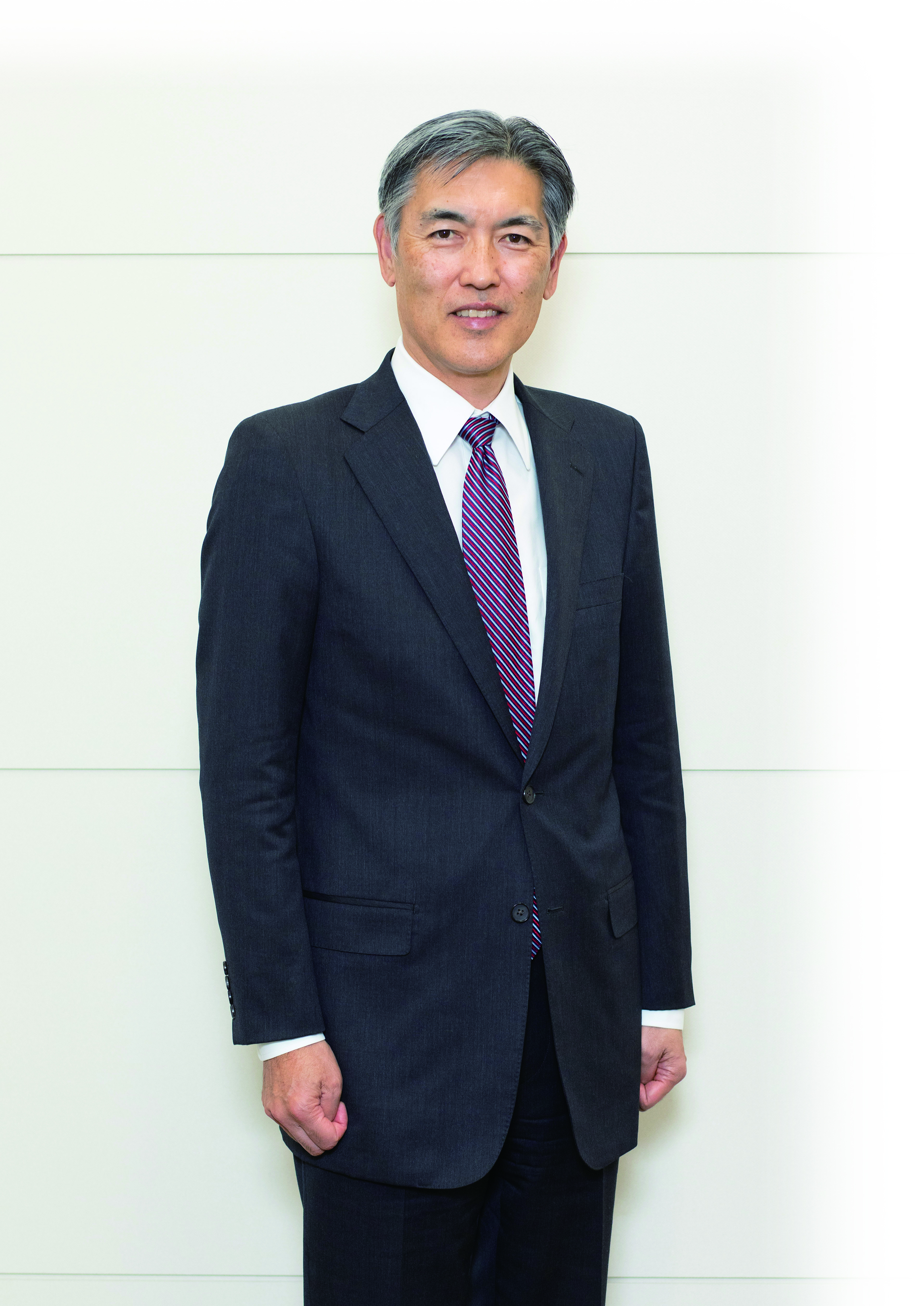
President, Keio University
Born in Hyogo Prefecture in 1965. PhD (Materials Science).
He graduated from the Department of Instrumentation Engineering, Faculty of Science and Technology, Keio University in 1989. He received his MS and PhD from the University of California, Berkeley in 1992 and 1994, respectively. In 1995, he became an instructor at the Faculty of Science and Technology, Keio University. After serving as an assistant professor and associate professor, he became a professor in 2007. He was appointed Dean of the Faculty of Science and Technology and Chair of the Graduate School of Science and Technology at Keio University in 2017, before assuming his current position in 2021.
He specializes in solid-state physics, quantum computers, electronic materials, nanotechnology, and semiconductor isotope engineering. He has held various positions, including: specially-appointed professor at the University of Tokyo; visiting professor at the National Institute of Informatics; visiting professor at the University of Tokyo; director of the Physical Society of Japan; director of the Japan Society of Applied Physics; research supervisor of "Quantum State Control and Functionalization" research area in JST’s PRESTO Program; program director of quantum information technology in MEXT Q-LEAP (Quantum Leap Flagship Program of the Ministry of Education, Culture, Sports, Science and Technology). He has been a member of the Science Council of Japan since 2020.
He received the IBM Japan Science Prize in 2006 and the Japan Society for the Promotion of Science Prize in 2009. He was named Fellow of the Japan Society of Applied Physics in 2015 and Fellow of the American Physical Society in 2021. He has co-authored many books, including Future Society Created by Carbon (Maruzen Planet), Silicon Quantum Information Processing (Springer), Handbook of Condensed Matter Physics (Asakura Shoten), and Quantum Optics from the Basics (Optronics).
Kitayama:Quantum computers are suitable for simulations and optimization of complex combinations that would take an enormous amount of time on classical computers, but it is also said that classical computers are more suitable for calculating optimum solutions given a limited number of options. What are the advantages and disadvantages of quantum computers compared to classical computers, and in what areas are quantum computers expected to excel?
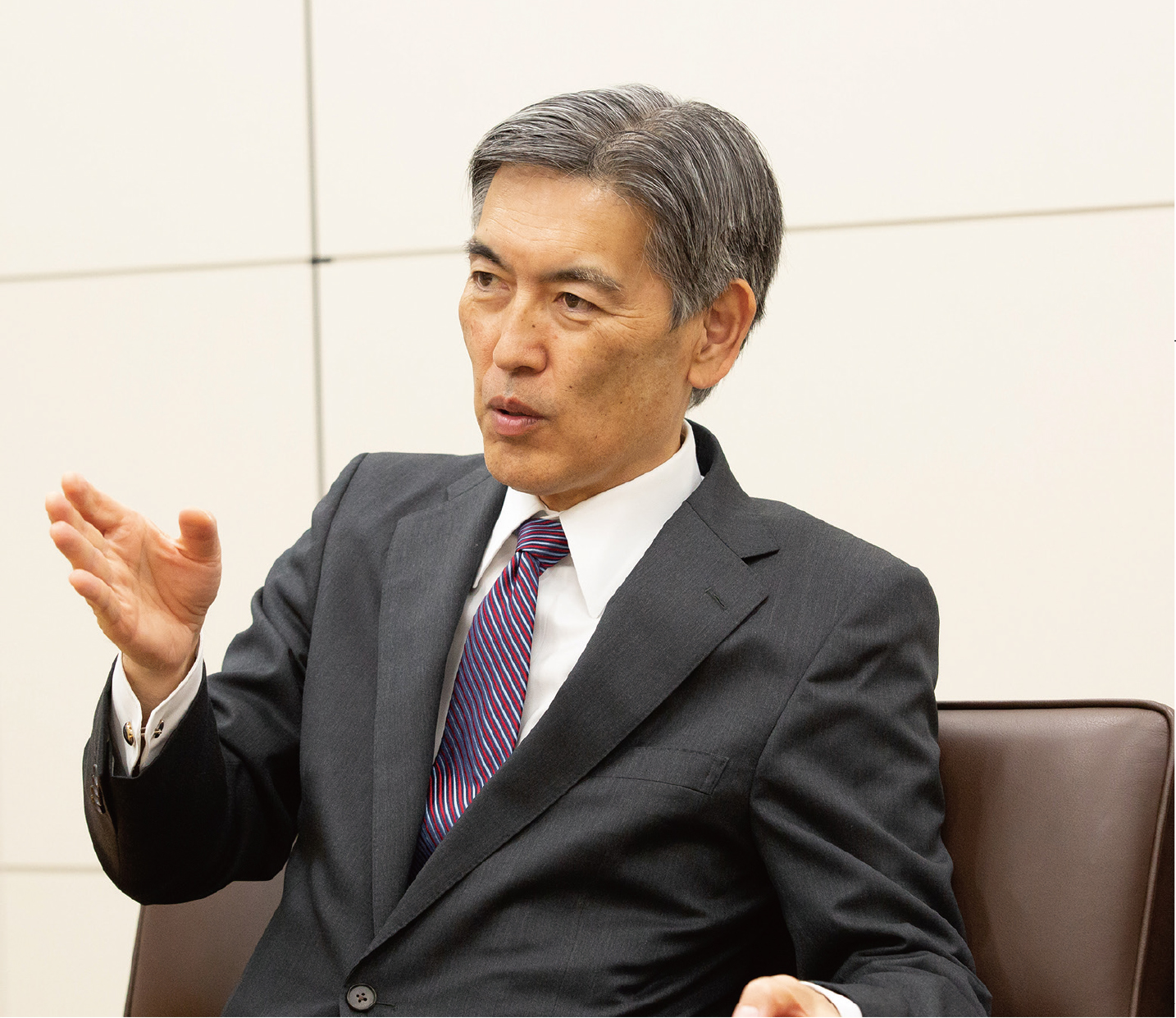
Itoh:The most important feature of a quantum computer is that a single bit can be used as both a 0 and a 1. For example, if a bottle has a half chance of containing red wine and half chance of containing white wine, the usual thinking is that if there are 100 bottles, there should be 50 red and 50 white. A quantum computer, however, thinks that a single bottle could be either red or white. Until you open the bottle, it is not determined which color it is. Whether it is red or white is determined the moment you open it, the probability of either being 50%. The conversation would be over if we did not accept such a state, but in quantum mechanics it is possible. For example, if one neutron is added to uranium-238, it becomes unstable uranium-239. This uranium-239 gradually converts to plutonium-239. The time it takes for 50 out of 100 uranium-239 atoms to turn into plutonium-239 is called the half-life of uranium. Focusing on one uranium-239 atom, it has a 50% chance of being both uranium and plutonium during its half-life, which is the quantum mechanical concept of superposition. Using this concept, a single bit can have two states, 0 and 1, and when there are two bits, there can be four types of state, 0.0, 0.1, 1.0, and 1.1. This number of types is doubled each time a bit is added. So it doubles to eight when there are three bits, and doubles again to 16 with four bits. If you have 280 bits, that is, if you multiply by two 280 times, you have the same number as there are atoms in the universe. So you can have all the consecutive numbers from 0 to the number of atoms in the universe together. Using this to compute, you can perform massive parallel computations that advance all numbers simultaneously and in parallel, without first trying 0, then 1, then 2, then 3, and so on. However, despite having a tremendous number of different types, only one type can be read out at the end. In the example of three bits, there are eight different types of numbers at the same time, from 0, 0, 0 to 1, 1, 1, but when the final readout is done, only one type is possible, such as 0, 0, 1 or 1, 0, 0, etc. That's the most difficult thing about quantum computing. It is suited for problems that require massively parallel computations, but which can be answered with only one aggregate state at the end. Conversely, the biggest question for quantum computer developers is how many such problems exist in the world. Prime factorization, on which current cryptography is based, is a classic example of a problem that quantum computers can solve. In 1994, Peter Shor developed Shor's algorithm, a computational method for solving this problem. This demonstrated that quantum computers were usable, and the momentum for building a quantum computer quickly increased. However, solving only this problem is not practical. It is crucial to find out how many other problems a quantum computer can solve besides this one. Algorithm and software research for quantum computers is searching for such problems, and hardware research is creating the stage on which to perform the calculations. Progress has been made in both of these areas of research, and we now have real quantum computers in the real world, but what they can do is still limited. We are now at the stage of identifying what problems in the world can be solved and what problems are applicable to the industrial field.
Kitayama:So social implementation is important to clarify the problems and application fields suitable for quantum computers . Looking around the world, I get the impression that big tech companies such as IBM and Google are investing heavily in quantum computers, from R&D to social implementation, with progress being made particularly in the US. What is Japan's position in quantum computers from a global perspective? What kind of initiatives should Japan take in the future?
Itoh:When Japanese semiconductor technology took the world by storm in the late 1970s and 1980s, it was said that Japan was merely improving on technologies such as thermal oxidation discovered by Bell Laboratories and other US and European research institutes. Then, when "Japan as Number One"*1 became a topic of discussion, it was said that the Japanese lacked creativity. People asked how many Japanese Nobel Prize winners there would be. Later, when the bubble economy burst, there was a growing momentum to revive Japan with technological power, and the Science and Technology Basic Law was enacted. From around 1995, universities began to receive large research budgets. This gave birth to Japan's world-class quantum computer technology. In 1998, Prof. Hidetoshi Nishimori of the Tokyo Institute of Technology presented his fundamental theory of quantum annealing, an important fundamental research result. The world's first superconducting quantum bit, or qubit, developed in 1999, was the result of NEC's Fundamental Research Laboratories. I was also able to take advantage of this and work on the development of silicon qubits. Unfortunately, however, they have not led to any successful commercialization activities.
In contrast, what I would like to know is how Japanese companies, which once built such a strong track record in semiconductor technology, view the process of huge investments in quantum computers by IBM, Google, and other startups. From my perspective as a fundamental researcher, if it is technically possible for a Japanese company to build a two-nanometer high-performance semiconductor plant, which Taiwan's TSMC (Taiwan Semiconductor Manufacturing Company) is planning to do by 2025, it should be even easier for a Japanese company to build a quantum computer in the future.
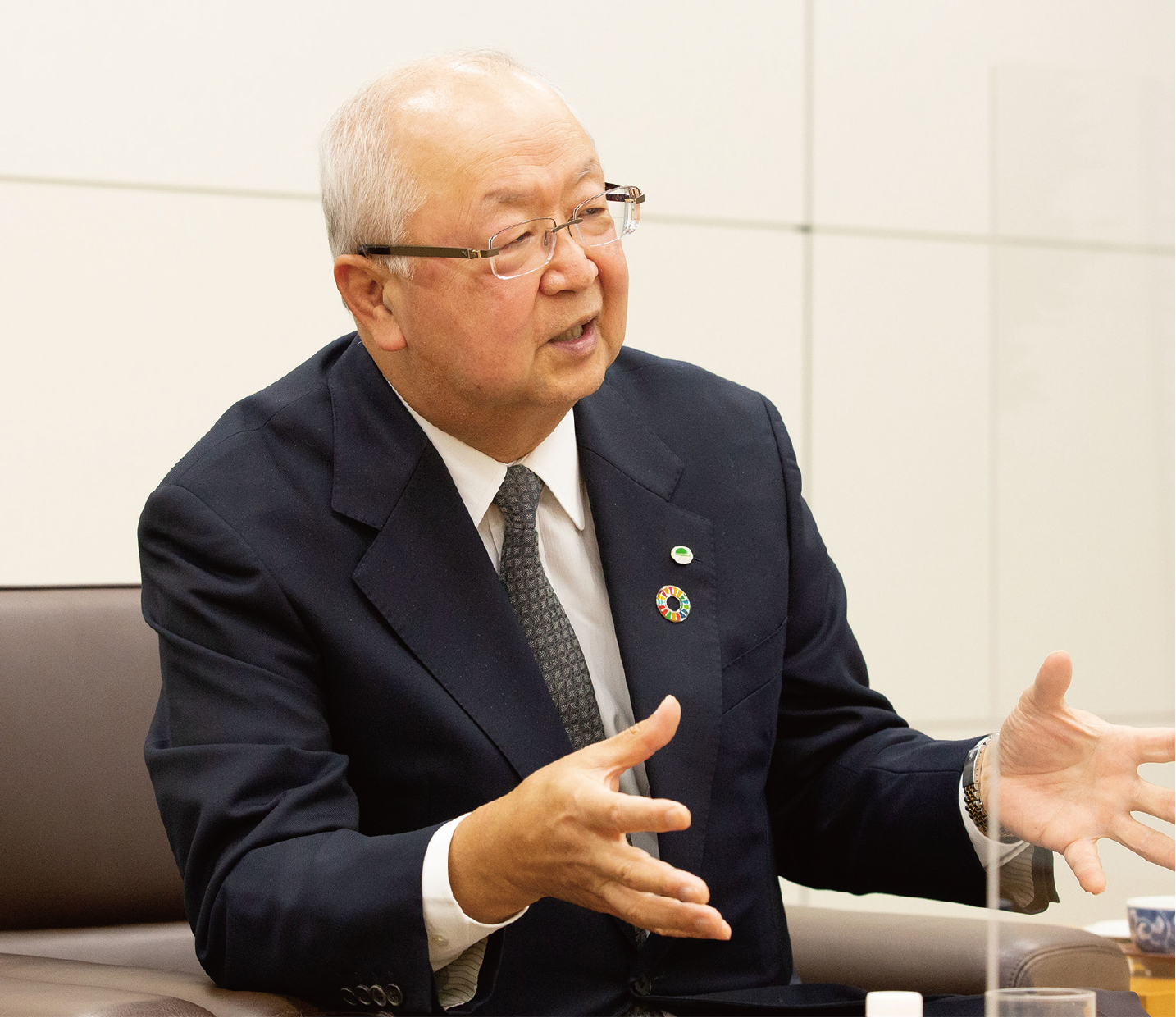
Kitayama:First, I would like to discuss the current state of semiconductor technology. In order to get Japan's semiconductor production back on track, we need to improve the performance of our semiconductors. I can't comment on the ideas and initiatives of other companies, Hitachi is now thinking that we can help customers more quickly by contributing to the process of manufacturing high-quality semiconductor products at high-productivity than by regaining the semiconductor technology that we previously gave up. Fortunately, Hitachi has a range of inspection equipment that utilizes high-precision measurement technology, so we believe our contribution has already begun.
Itoh:You mean Hitachi will participate in one team, a consortium. Hitachi has various one-and-only technologies that cannot be imitated anywhere else.
Kitayama:We certainly have technologies that are essential for semiconductor manufacturers. Especially at the start-up stage, it is difficult to launch without the cooperation and collaboration of various companies, including national and government entities. I believe that it’s necessary for companies with different areas of expertise to pool their strengths and advance the project, rather than for one company to do everything. Is that the same in the field of quantum computing?
Itoh:Yes, it is. In that sense, if we can successfully put together the best team in Q-STAR*2, I think we can reach a very high level of perfection in quantum computer technology.
Kitayama:While AI has gone through several booms since research began in the 1950s, and is currently said to be in its third boom, it is sometimes suggested that technological progress has not kept pace with the world's expectations. Nearly 40 years have passed since Richard P. Feynman first mentioned the concept of quantum computers in 1981, and unprecedented expectations have been raised for quantum computers. What can be done for technology to live up to these expectations?
Itoh:AI has seen major technological breakthroughs in both computers and deep learning, becoming something that is now actually usable.
Considering quantum computers, first of all, in terms of hardware, it is not enough to simply prepare a superconducting qubit chip, and many other things are needed, such as wiring, microwave generators, and magnet materials. Cooling systems are also important, requiring the integration of various technologies, including measurement technology, which is one of Japan's fortes. Unless all of these come together, major breakthroughs will not occur. IBM is probably not developing everything on its own, either, but trying to do research as a team, keeping its own systems somewhat open while creating an environment in which others can understand the needs of each of the various components and technologies.
Next, in terms of software, we need both applied mathematical development skills to create algorithms, and computer science skills to put them into computer programs. In addition to these, more important is the choice of the problem to be solved by the quantum computer. We would like industry to join us here in deciding which issues to tackle. By gathering lots of examples from companies, such as those of problems taking too much time, or just being too difficult to solve, people will see that quantum computers can surpass the capabilities of current computers in dealing with such problems, and this will lead to the development of algorithms and software for quantum computation.
IBM, for example, has been developing software for its quantum computers for six to seven years since it announced quantum computers, and its performance has been improving rapidly. The growth rate is comparable to Moore's Law*3, and by 2045, quantum computers are expected to surpass the performance of current computers. It is also claimed that if quantum computers can be used only in key areas while simultaneously using current supercomputers and AI, rather than having quantum computers calculate everything, they will surpass current computer performance by 2030. In the end, what this requires is comprehensive strength. If quantum researchers focus only on developing quantum computers, they will never find the problems. The ultimate goal is not to build a quantum computer, but to speed up the development of today's computers and raise their performance.
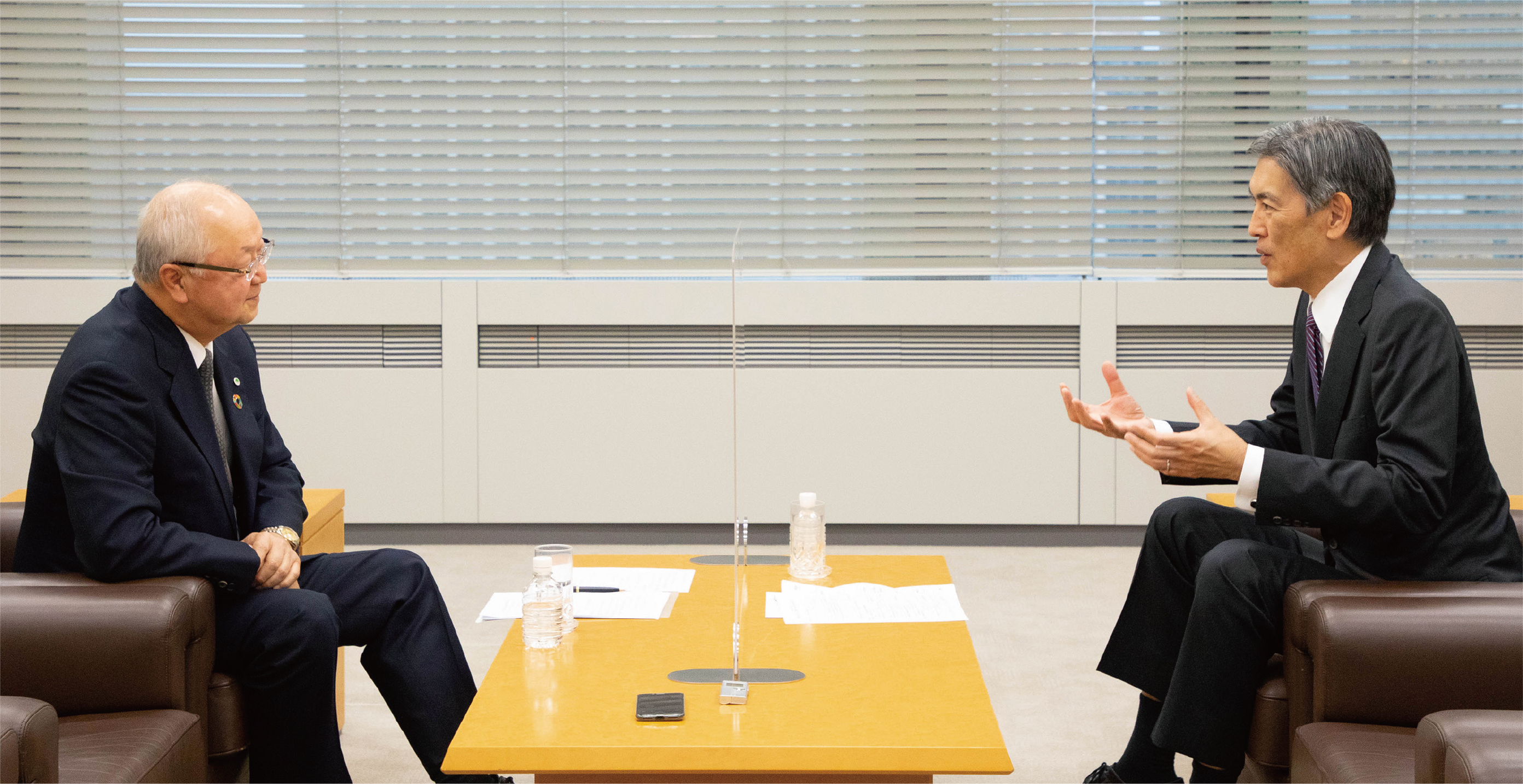
Kitayama:IBM and Google seem to be working closely with the automotive and chemical industries, rather than omnidirectionally, to develop products specifically for those fields. Are discussions going on in other industries about which problems can be solved by quantum computers?
Itoh:Google also designs and actually makes its own semiconductor chips, so there is no doubt that they have considerable knowledge of quantum computers as a team. So does IBM. However, if we focus on a particular company or industry, we will only find a limited number of problems. Automobile companies only bring problems with cars, and chemical companies only bring problems with chemicals. There are eight companies participating in Keio University's Quantum Computing Center: Hitachi; three companies in the financial industry, Mitsubishi UFJ Financial Group, Mizuho Financial Group, and Sumitomo Mitsui Trust & Banking; two companies in the chemical industry, JSR and Mitsubishi Chemical; and Sony Group and Toyota Motor Corporation. Top researchers from each company gather at Keio to research the problems faced by their respective companies and industries.
For example, when people from other industries joined in to discuss the financial industry's problem of taking eight hours to calculate the price of a certain financial product, they were able to ask questions from a variety of angles, deepening the discussion. In this case, it became clear that the reason why the calculations were taking so long was that, in order to increase the accuracy of the calculation results, averages were being taken after considering all possibilities. The solution proposed was that superposition could be used to calculate the results all at once. Although this case was about a problem in the financial industry, the solution is a mathematical method called Monte Carlo simulation, so it could also be used in the chemical industry, enabling collaboration and research across industries. A paper on the issue of calculation has already been co-authored by Mizuho Financial Group, Mitsubishi UFJ Financial Group, Keio University, and IBM. This is the first time that two financial groups have co-authored a joint paper. I am confident that more and more papers like this will appear in the future.
Another paper was recently published that examined whether there is a correlation between the changes in stock prices of two companies. In the automotive industry, for example, one can imagine some correlation between the stock prices of Toyota, Subaru, Nissan, and so on, but to look for synchrony or conflicting movements between pairs of companies in completely different industries, one would have to look at many combinations, and such a huge calculation is not possible with today's computers. We can now see, however, that this could be done with a quantum computer. We developed a calculation method and used stock market data at the time of the Lehman Brothers collapse in 2008, and were able to find a combination of corporate stock prices that actually showed a correlation. In terms of performance, it is still not as powerful as today's computers, but in terms of computational power, I believe that quantum computers will eventually surpass them. This pair correlation can actually lead to fundamental research in many fields. In the pharmaceutical industry, for example, correlation between biomarkers may improve the accuracy of predicting drug efficacy and side effects. I strongly feel that there is great scope behind each practical problem.
When will quantum computers be able to surpass today's computers? This is an important point, but very difficult to prove in terms of computer science. There are many things involved, such as how to estimate the memory size for all kinds of usage scenarios, and it is difficult to put into a rigorous paper precisely because you have to consider not only the number of steps but also the clock speed. Ultimately, though, I think it is important for companies to try out some of their own problems and realize that quantum computers are better suited for specific uses. When they get a sense of that, they know that a quantum computer is superior for that problem. I think the goal of our consortium, and perhaps of Q-STAR as well, is to make that day happen.
Kitayama:While open innovation is ideal for inter-company collaboration, there is also information that companies do not want to pass on to their rivals. How to draw the line between these areas of collaboration and competition seems to be an untouched question at this point. I think that openness is progressing at the stage of co-authored papers, as you mentioned earlier. The important issue is how far this can be maintained at the next stage, when the technology is put into practical use, including social implementation. I believe that a breakthrough on this will greatly change the speed of social implementation of quantum computers.
Itoh:I feel that it would be a massive change for companies to want to continue open innovation, and it would be amazing if the development of quantum computers progressed to such a level that each company could keep that mindset but still think they can't be open in certain areas. So we are entering a phase of competition, in a good way. In the case of optical fiber technology, for example, companies are competing with each other on international standards and on material and technology patents, a sign that industrialization has advanced considerably.
I have been involved in R&D of silicon quantum computers for 24 years. While many researchers used to think that such a thing could never be done, Hitachi, within the framework of Hitachi Cambridge Laboratory*4, and I, with my increasing number of overseas partners in Germany, UK, Canada, and Australia, have pioneered cutting-edge technologies, achieving a level of technology that many had never thought possible, and resulting in the completion of a real quantum computer.
The first time I programmed a quantum computer, my hands were trembling. Although I was the one who had been trying to make it, I never really thought such a day would come. I realized once again that this day had arrived, but at the same time, I also realized that creating the hardware would be meaningless unless someone also created the algorithms and software for using the quantum computer in future. Basic mathematical skills are essential for that. I think the ideal form of industry-academia collaboration at the application stage is the development of new algorithms and software with the help of mathematicians who have cutting-edge knowledge from universities. In this case, I believe that universities’ contribution will gradually decrease in future. The role of universities is to take it from the consortium form to the competition stage. Right now, silicon quantum computers have achieved two qubits and are at the stage where they may be able to make three qubits, but further integration is no longer the tasks of universities. After presenting all the physical basics, I think it's time for a complete handover to the companies. We, the universities, are always looking ahead and creating opportunities for collaborative research up to the hand-off stage. Next, corporate alliances such as Q-STAR work on development in their respective areas of collaboration. In time, I think the areas of competition will increase. I believe that once companies feel they have moved from the collaborative realm of open innovation to the competitive realm, we will have achieved great success.
Kitayama:In a small country like Japan, where many companies are competing with one another in the same industry, open innovation needs to be promoted with the help of government. This, however depends a lot on the political climate. The environment surrounding the R&D of quantum computers has also become entangled in geopolitical issues, such as the intensifying struggle for technological supremacy between US and China, and the economic sanctions resulting from Russia's invasion of Ukraine, which may be creating a kind of barrier to open innovation.
Itoh:In the academic field, the question is how to protect nationally critical technologies. What we universities are required to do is to make a clear distinction between academic fields where we can deepen exchanges, such as basic physics like elementary particles and basic mathematics, and technical fields that are subject to security-based export restrictions. Judgments about this based on the common sense of researchers should be avoided, and instead, protocols should be systematically created for this purpose. For example, up to a certain point, students from all countries and regions will be encouraged to freely research together as much as they want. But from that point on, they must be careful, because critical technologies are involved. Firmly establishing such a protocol will, we hope, help to preserve academic and cultural exchanges.
Kitayama:One of the essential requirements for innovation is, I believe, to work together with people from different backgrounds, rather than only those from the same academic background or learning environment. We can gather ideas that differ from our own field, and this helps to make breakthroughs. Although everyone knows innovation can only happen in that way, when we try to make it happen, all kinds of obstacles keep popping up one after the other. What should we do to reach the success stage you mentioned earlier? What kind of human resources should be developed to make new breakthroughs based on open innovation?
Itoh:Quantum computer research can be done by anyone at the field level. For example, the field of applied mathematics regarding algorithms and software is not so mature, so someone with a master's degree in mathematics who is facing quantum computers for the first time can still be at the forefront of research within six months. Also, each elemental technology is not so different from semiconductor and other technologies, so all parts, algorithms, and software can be handled by people from the departments of electrical engineering, mechanical engineering, information engineering, mathematics, materials science, and others.
Rather, the people who are really needed in quantum computer research are the commanders, the people who do the overall planning as it relates to packages. It is often said there is a shortage of quantum human resources, but that is the same as saying there is no one who can design an entire car. Once the individual parts and what needs to be done have been determined, everything, including navigation, can be done with today's technology and by utilizing the unique characteristics of people who have studied science and technology. The bottom line is that no one can bring the whole thing together by themselves.
Kitayama:I retired from the board of directors of Hitachi, Ltd. in March 2022 and assumed the position of chairman of Hitachi Research Institute that April. The ability to coordinate the entire process is a necessary skill for an organization such as ours that conducts research, and the challenge is to cultivate this ability. From my previous perspective, Hitachi, Ltd. has also been emphasizing the development of human resources who can also play the role of coordinator. This requires experience, but it's not always the case that someone who has never made a mistake can produce good output. Fatal mistakes are very bad, but making a number of small mistakes in succession can help foster a sense of how to proceed with a project. This can only be cultivated in a field where someone feels they can use their experience, and not so many people can do that.
The old-fashioned way of training such people is to let them do actual work in an OJT setting, telling them that it doesn't matter if they make mistakes. A mentor will watch how they do this, providing support from the side and giving advice on new ideas and perspectives to adopt. I think the most important thing is to let them handle things themselves to some extent, and to give them space to work, telling them it’s OK to make mistakes. In this sense, Q-STAR was launched with the idea of "Why don't you give it a try?" We believe that giving people the freedom to develop through trial and error is where a company can grow significantly.
Itoh:Fortunately, I was told that I could do whatever research I wanted, and I started my own research on silicon quantum computers in 1998. In the process, I received many suggestions at academic conferences that such-and-such was not right, or it was useless, and so on. At the time, a quantum computer based on a compound semiconductor called gallium arsenide was ahead of the competition, so we were confronted with various reasons why silicon could not be used. In order to overcome those points, we had to thoroughly check everything, including numerical values, and produce physical results. However, this is fundamental research, so even though I know at the chip level what kind of package I have to create as a result, I cannot tell whether it can be done at the system level. A team would probably have to be formed of quantum computer and systems people. If such human resources are developed in Q-STAR, even if they do not necessarily have knowledge of quantum computers, it will then be possible to have experts in their respective fields join to promote R&D and social implementation.
Kitayama:Since the social implementation of a quantum computer is too difficult for one company to do alone, the nature of a consortium is important. It can only take shape if we properly plan who will be involved and how they will be involved. The electronics and automobile industries already have their own established fields of technology. However, as the nature of technology changes in the future, I feel there will come a time when we have to move beyond our respective industries and change the scope of technological development that companies engage in order to survive. A good example may be Google, now unrecognizable from what it originally was.
Kitayama:Lastly, do you have any advice for Hitachi and Hitachi Research Institute?
Itoh:There was a Nobel Prize nominee in our field called Tonomura-san*5 who used to work at Hitachi's research laboratories, although he has since sadly passed away. The institute also undoubtedly has world-class knowledge in all areas of physics, chemistry, and materials.
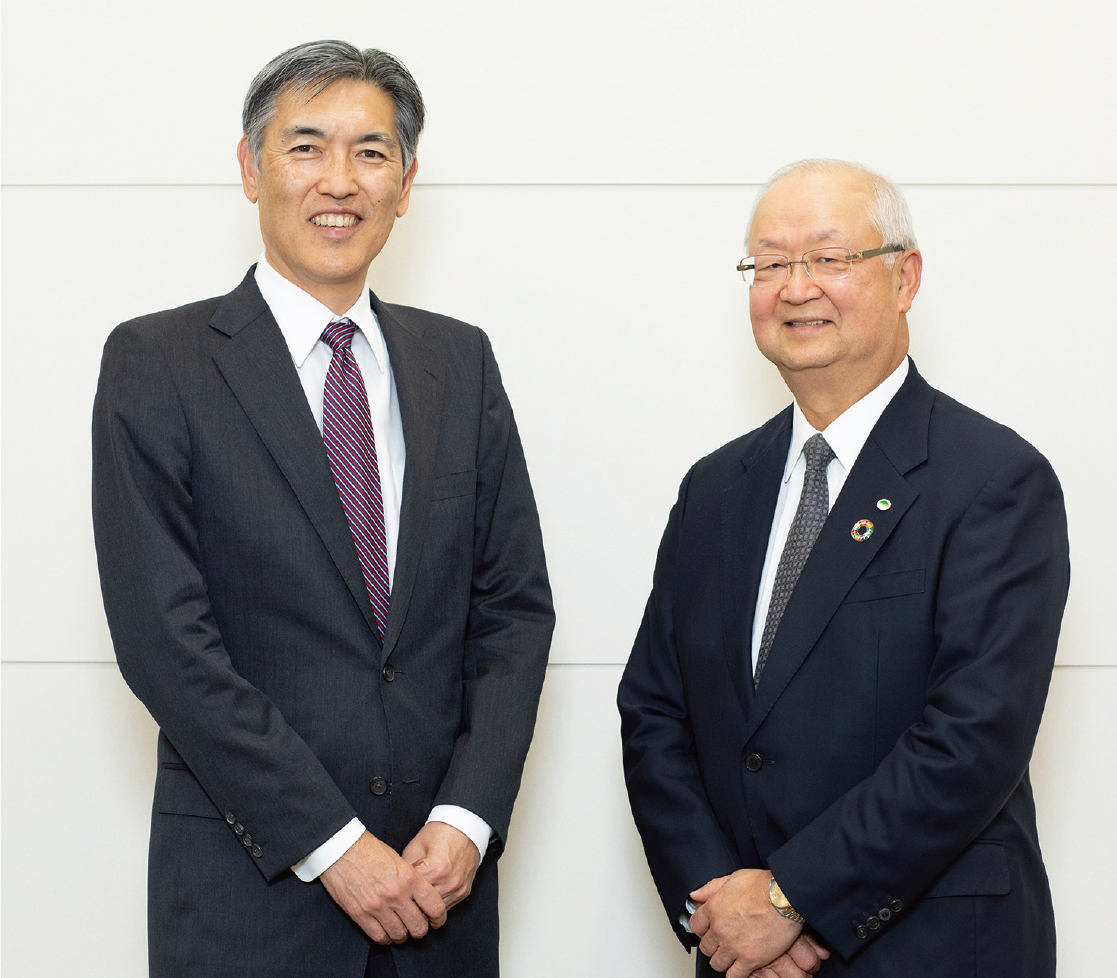
If I had to pick one area where our university has fallen short, it would be our failure to accept a wide variety of people. This is something on which we should reflect. Keio University admits about 6,500 new students each year. If we accepted 20 new students each from 100 different countries or regions, that would mean 2,000 new students from differing backgrounds joining our student body, or if we accepted 30 students from each country, that would mean 3,000 such students joining us. If that happened, the world would completely change. By opening the door to 100 countries or regions, we will avoid bias toward certain countries or regions, reduce the problem of fragmentation, and provide good learning opportunities for all parties involved. The first thing we should reflect on is the fact that our university has not been expressing such ideals, which they should be doing. Especially in Japan, where the birthrate is declining, we need to increase the number of young people who will support our future economic development. Rather than simply asking young people to come to Japan, it would be ideal if we could create a place for them to learn together and, as a result, provide them with an education that would help them stay with Japanese companies. I think our university’s regret is not having provided such an environment for young people who are just starting out, until now.
If we can create such spaces for learning, perhaps companies will change from the bottom up. My sense is that when people from various countries and regions with different ways of thinking come to us, they will have opinions that we would never have thought of, such as the best way to sell certain products in Brazil, the inappropriateness of a certain name in Oman, and so on. While Japan has until now boasted high-level technology and upheld high-level discipline and norms, I think the key point is to what extent we will be able to incorporate diverse ways of thinking into this.
Kitayama:I really feel the difficulty of incorporating diversity. Hitachi's board of directors has included people from overseas, for example, from the US, UK, Germany, France, and Italy, and it has routinely occurred to me that their ways of thinking could be so different. A bottleneck in communication is the feeling of resistance to different languages and cultures. Once this resistance is gone, people can say what they want to say to others more clearly. I believe that such frank conversations are the beginning of mutual understanding. To this end, I thought it was essential to gather people with different backgrounds, as you mentioned, and encourage them to interact with each other.
You have given us a lot of very in-depth insights today. Thank you very much.
*This interview was held with physical distancing measures in place.
*Google is a trademark of Google LLC.
*IBM is a trademark of International Business Machines Corporation, registered in many jurisdictions worldwide.
*Other company and product names mentioned in this publication are trade names, trademarks or registered trademarks of their respective companies.
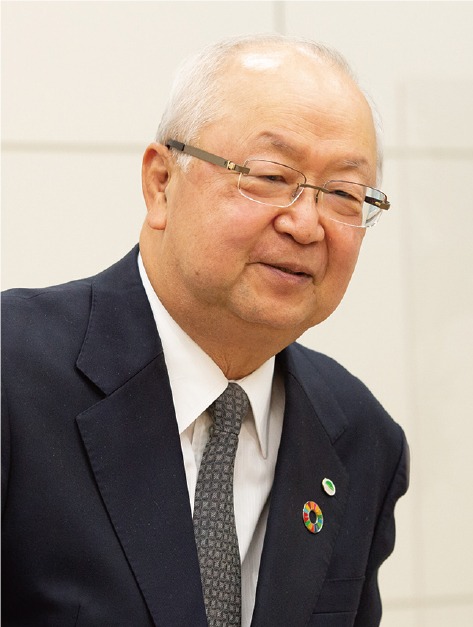
It was shocking to hear that we are now at the stage where people with no knowledge of quantum computers can be involved in their development. I would like to thank Professor Itoh and the many other basic researchers for their efforts in bringing quantum computers into practical use, something that felt like a pipe dream a generation ago. There are a wide range of related technological fields, and in the future, there will be an even greater need for collaboration between companies and across the boundaries of industry and academia. We firmly believe that in order to survive the development competition ahead, we urgently need to develop human resources on a diversity basis.
Ryuichi Kitayama Chairman, Hitachi Research Institute